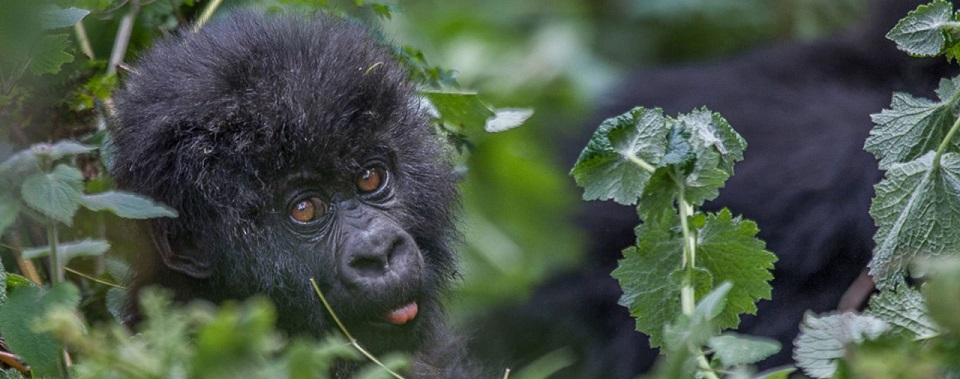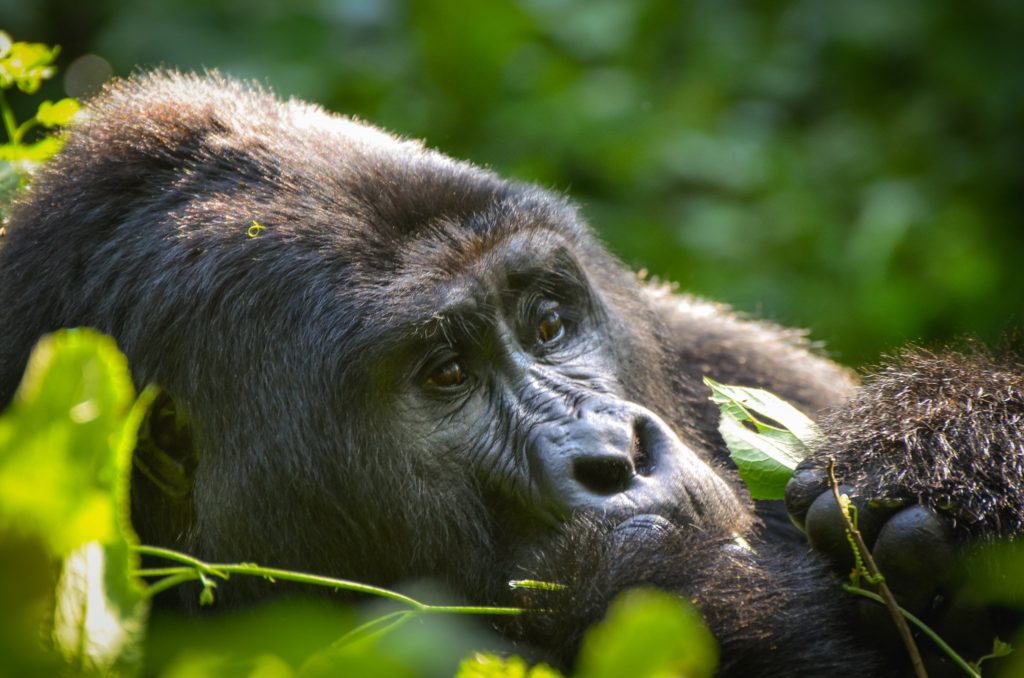How gorillas adapt to their environment
How gorillas adapt to their environment: The physical characteristics of their homes and the gorillas themselves enable the gorillas to adapt to their surroundings in a variety of ways. The Virunga Massifs, which include Uganda’s Bwindi Impenetrable National Park, Mgahinga Gorilla National Park, Virunga National Park, and Volcanoes National Park, are home to the endangered mountain gorilla species. There are only 1063 mountain gorillas left in the world, and these national parks are the only places where they may be found. Mountain gorillas can still be seen living in deep tropical rainforests in the Virunga Massif area and Bwindi, which are situated at elevations of up to 4000 meters above sea level.

By the 19th century, mountain gorillas were all but extinct, but because to the efforts of gorilla conservationists and primatologists like Dian Fossey, the population of these animals has gradually increased, and as of 2018, they are classified as endangered rather than severely endangered. Families or groups of mountain gorillas are headed by a dominant silverback. A solitary gorilla family or group may comprise five to thirty members. Here are a few examples of how mountain gorillas adjust to their surroundings:
With the aid of their lengthy, dense fur covering their body, mountain gorillas are able to withstand the extremely low temperatures seen in high-altitude rainforests. Their lengthy hairy characteristic aids in their defense against cold-related illnesses such as the flu, cough, or pneumonia. They are also shielded from insect bites, which are very common in rainforests, by their long, thick fur.
The primary food source for mountain gorillas is the rich forest flora found in the jungles they live in. Because of this, they are able to completely rely on the vegetation cover that is present for food, allowing them to adapt to their surroundings without having to move in search of food or pursue prey. The mountain gorillas in the Virunga Massifs and Bwindi Impenetrable National Park are nourished like kings and queens due to the abundant foliage cover, which eliminates their need to travel great distances in search of food.
Another way that mountain gorillas adapt to their habitat is through their flat teeth, which allow them to chew and ground cellulose from the vegetation they eat. With their teeth, they may chew on the flora, including the roots and shoots, and the bacteria in their colons breaks down the food into a form that is easier to digest.
One way that mountain gorillas adapt to their surroundings is by using their arms for both movement on the ground and food selection. They can move on all fours, for example, when carrying little children on their backs, because to their strong huge arms. They can also select food by standing up and stretching to reach the appropriate foliage.

Their fingers are used to crack shots, split leaves, and crack open fruits for consumption. Their larger thumbs than the other fingers allow them to apply pressure to the fruit more easily and crack it open more quickly, which makes this more likely.
A silverback uses his hands to repel an attacker while they yell and hoot, say, when they pose a physical threat. In order to demonstrate their dominance, silverbacks also thud on their chest with their hands, a behavior that allows them to adapt to their surroundings and survive.
One way mountain gorillas adapt to their surroundings is by becoming more reclusive, especially in dangerous situations, preferring to avoid conflict than engage in it. Like any other wild animal, mountain gorillas are able to smell danger at a distance and will make every effort to avoid a confrontation so that they can leave the area covertly.

By using more than 25 different vocalizations and their body language, mountain gorillas have also learned to socialize with humans—those who are habituated and can be seen during a gorilla trekking experience. Like humans, they are sentient beings with feelings that they can express to both humans and other members of their family. For instance, when mountain gorillas feel threatened by human presence, they may become noisy and exhibit distress signals, which prompts humans to leave them alone. They have been able to adjust to their surroundings as a result.
Mountain gorillas also adjust to their surroundings by living in groups, where the dominant silverback controls all daily activities such as sleeping arrangements and feeding schedules for the other members of the group. This creates order in the household and offers them a feeling of direction.
How Gorillas in the Mountains Adjust to Their Environment
These are a few examples of how mountain gorillas adjust to their surroundings. A gorilla trekking safari offers the opportunity to see mountain gorillas in their natural habitat—the rainforests. Tourists can see habituated gorilla families throughout the year; however, it is recommended to visit during the dry seasons of June through August and December through February. To view them, you will need a gorilla permit. To help you with the process, get in touch with a trustworthy tour operator firm and schedule the greatest gorilla trekking safari in Africa.
